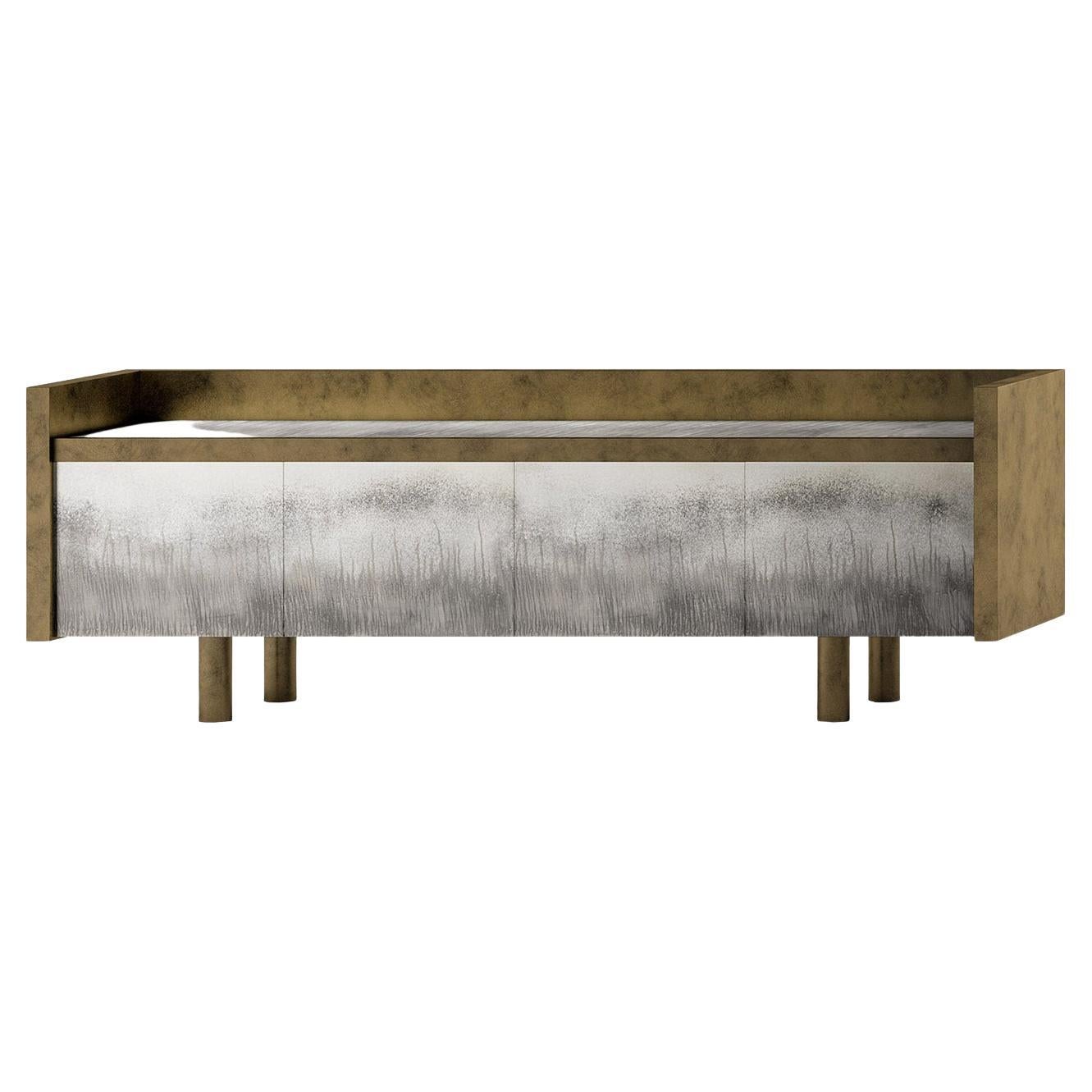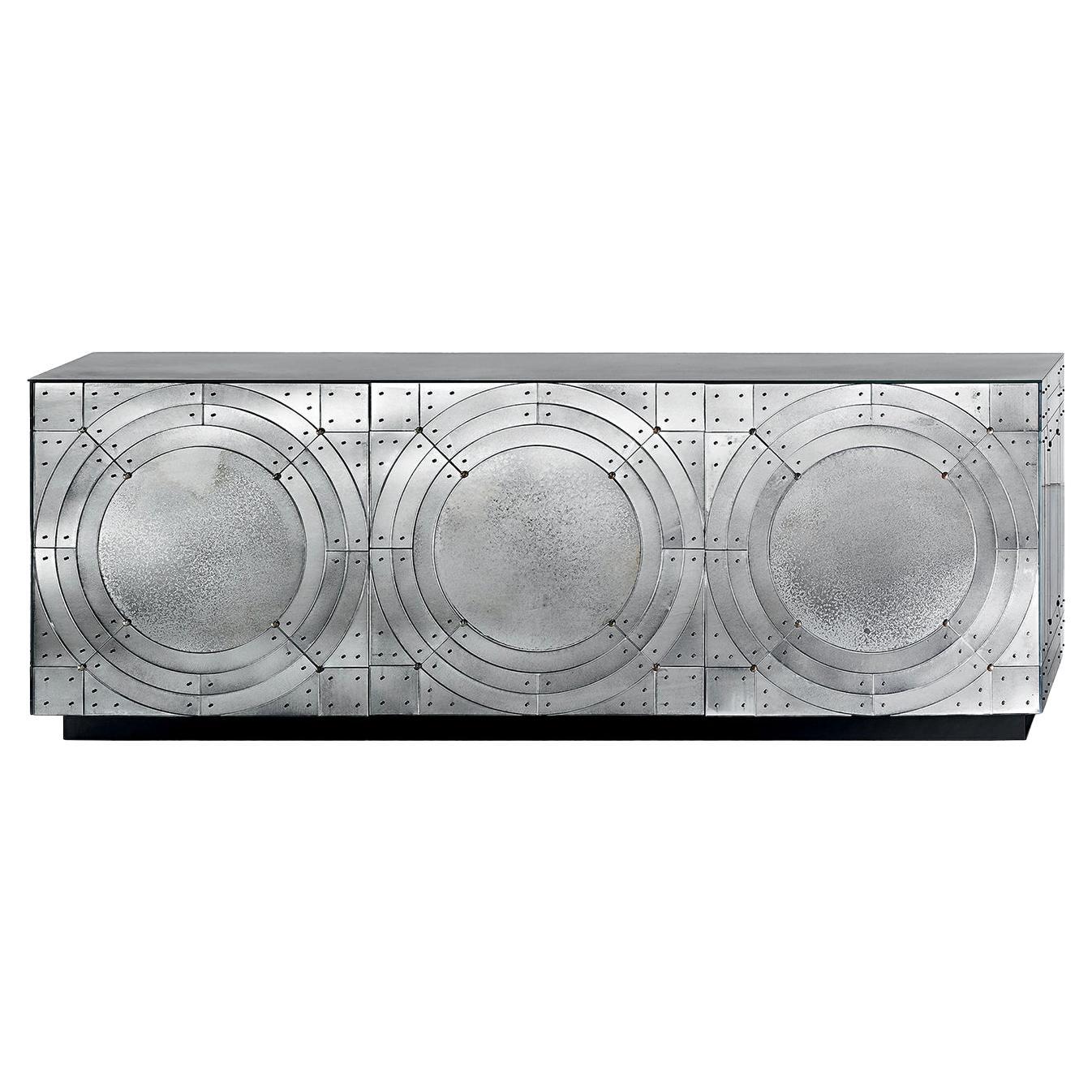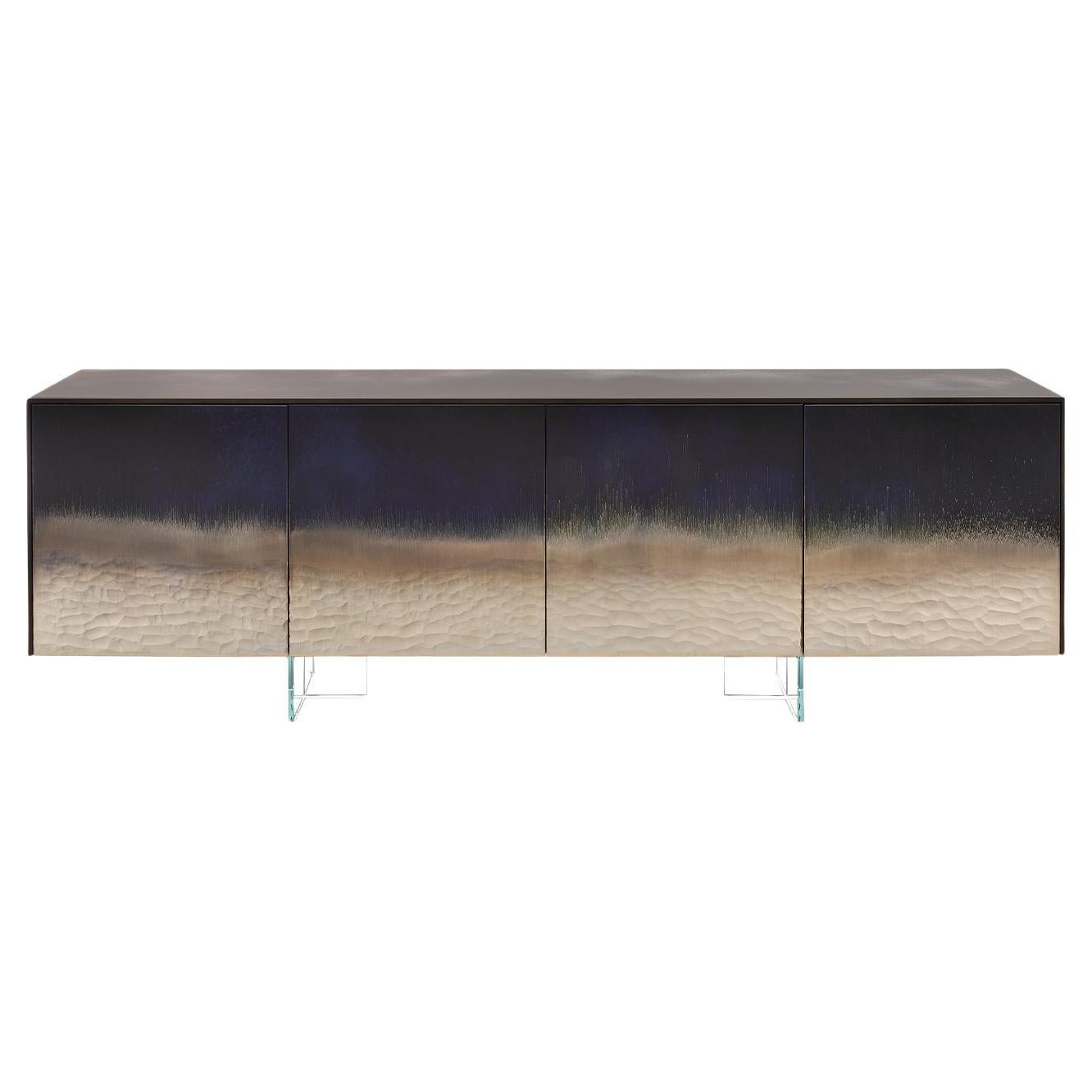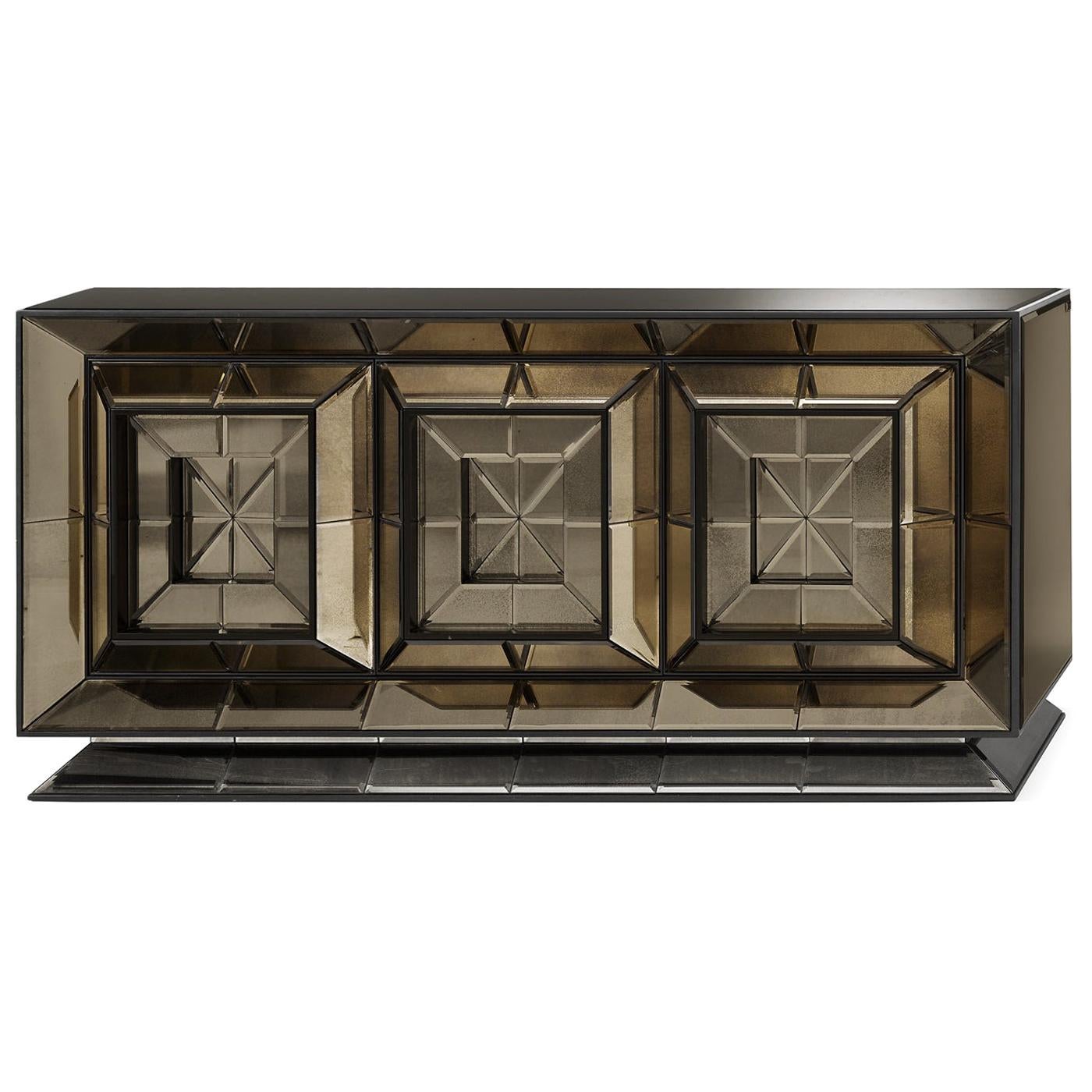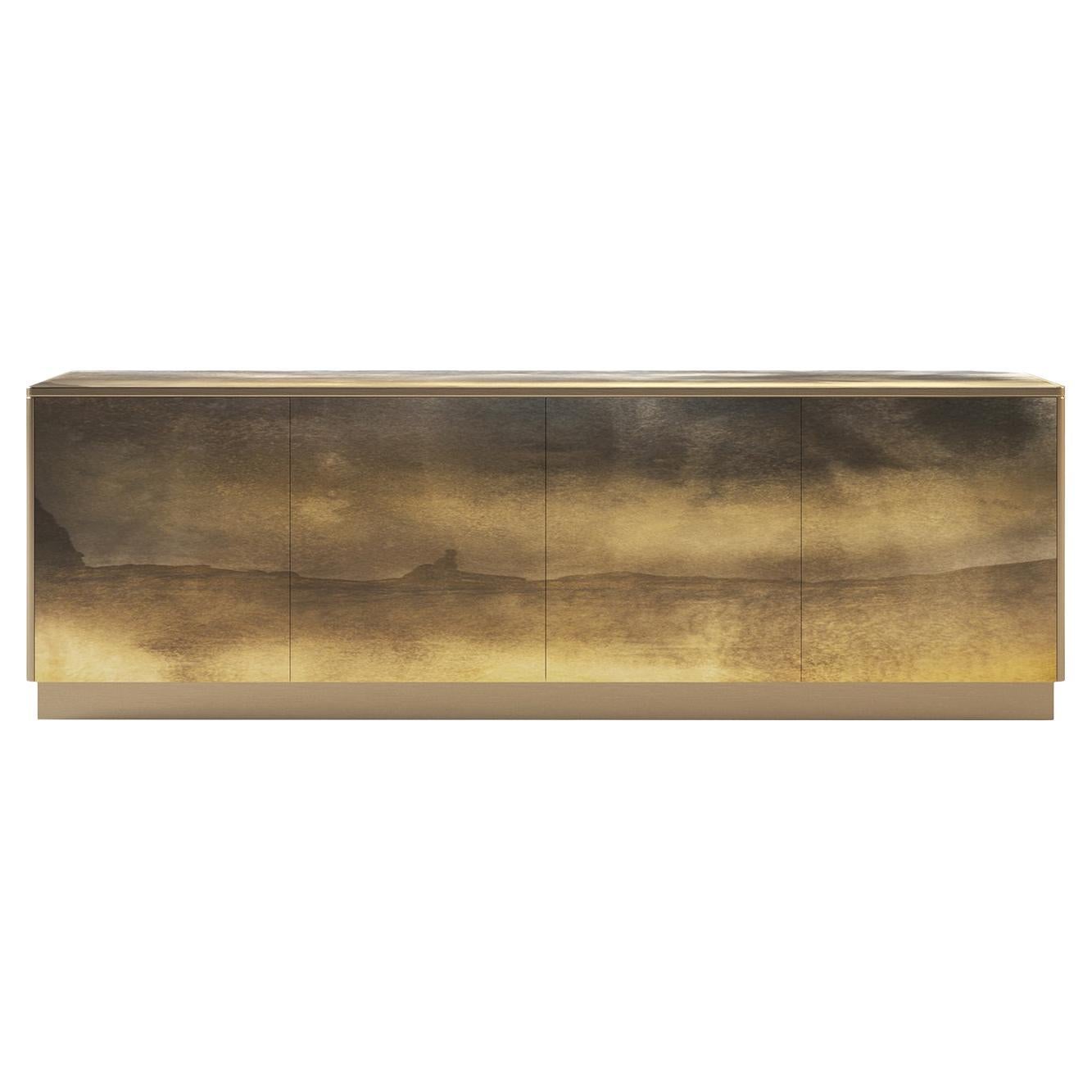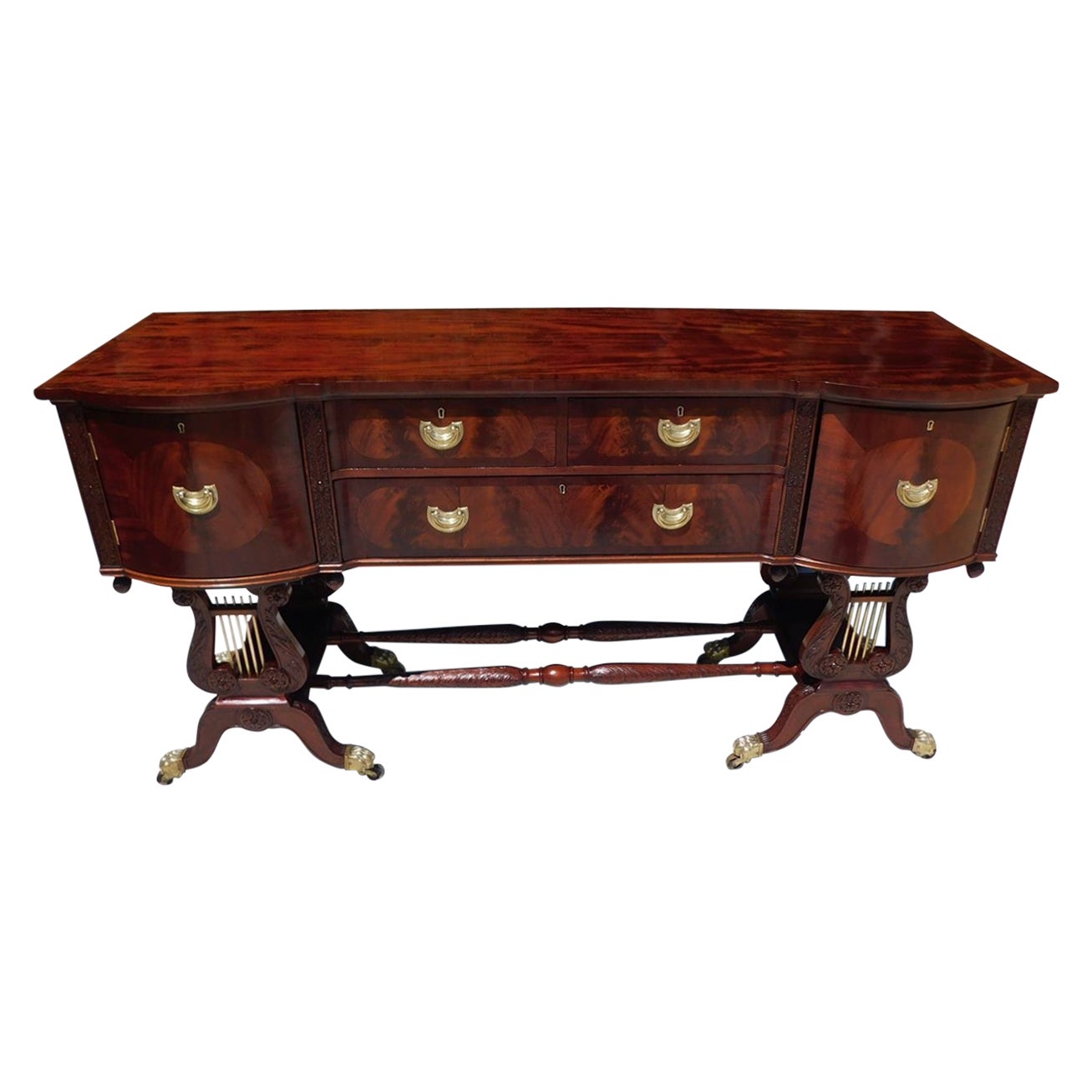Want more images or videos?
Request additional images or videos from the seller
1 of 5
Hope Sideaboard
About the Item
A stunning testament to the versatility of modern aesthetics combined with classical forms, this four-door sideboard will be a captivating statement piece in any interior. Designed by Leo De Carlo, the rectangular silhouette is fashioned of a beveled lacquered mirror in a kaleidoscope of colored panels adorned with a variety of shiny silvered handmade engravings. Four saber-shaped legs in glossy, chromed aluminum support the piece.
- Creator:Arte Veneziana (Designer)
- Dimensions:Height: 36.62 in (93 cm)Width: 80.71 in (205 cm)Depth: 21.07 in (53.5 cm)
- Style:Renaissance (In the Style Of)
- Materials and Techniques:
- Place of Origin:
- Period:
- Date of Manufacture:Contemporary
- Production Type:New & Custom(Current Production)
- Estimated Production Time:16-17 weeks
- Condition:
- Seller Location:Milan, IT
- Reference Number:
For customization options, please inquire.
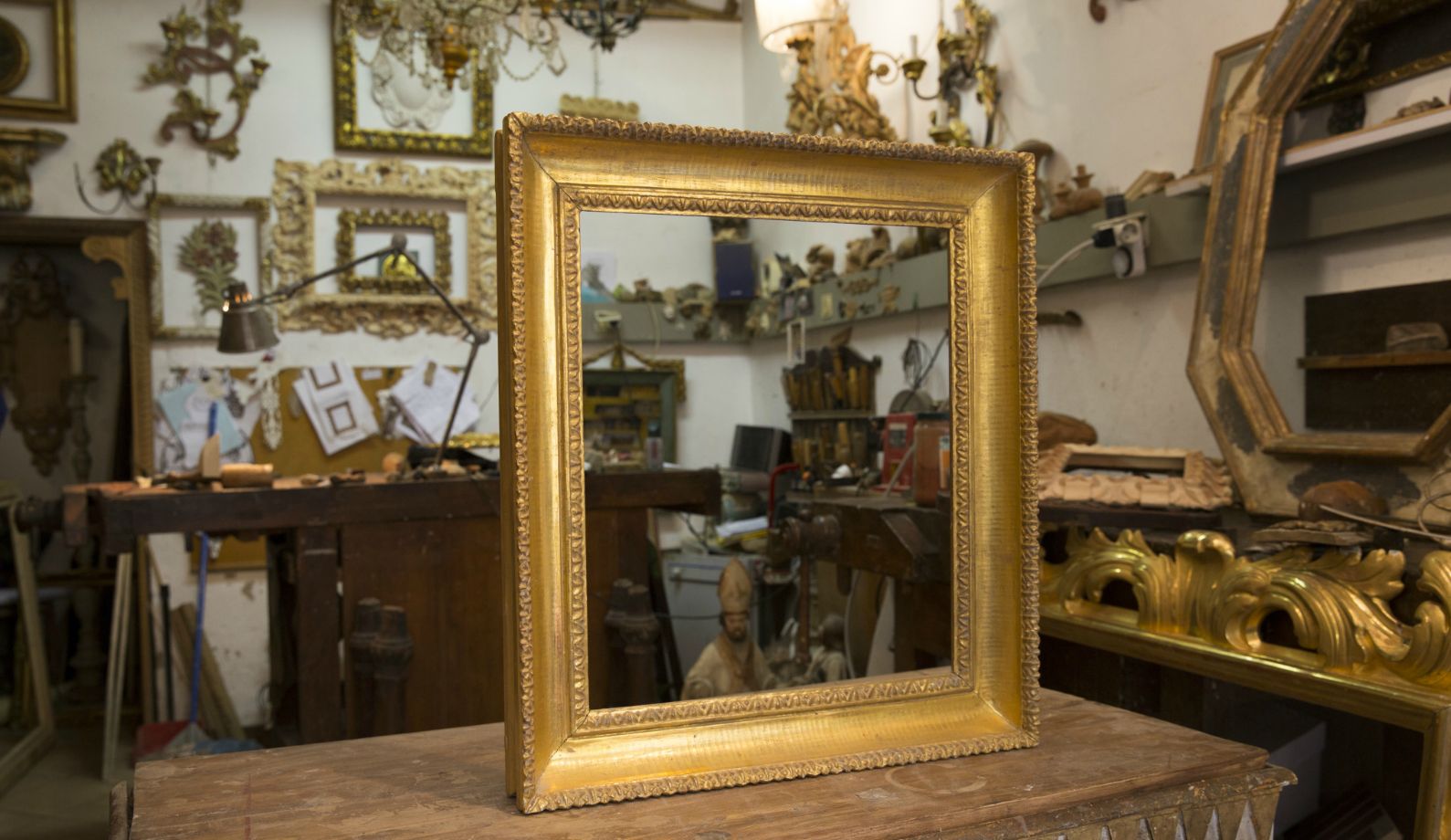
About the Seller
4.8
Diamond Seller
These expertly vetted sellers are 1stDibs' most experienced sellers and are rated highest by our customers.
Established in 2015
1stDibs seller since 2015
1,834 sales on 1stDibs
Typical response time: 11 hours
- ShippingRetrieving quote...Ships From: Milano, Italy
- Return PolicyThis item cannot be returned.
More From This SellerView All
- Dolomia SideboardBy Arte VenezianaLocated in Milan, ITDesigned by Leo De Carlo for the Boulder collection, this contemporary sideboard is characterized by a finishing that resembles "caigo", that is the Venetian word for mist. Four-drawer sideboard with push and pull opening, MDF veneered plywood structure. Wood structure finished in antique brass varnish, 6 mm thick extra-clear acid-etched glass with polished edge finish and diamond grinding wheel...Category
2010s Italian Renaissance Sideboards
MaterialsGlass
- Orbital SideboardBy Arte VenezianaLocated in Milan, ITThis sideboard of the Champ Elysées Collection has a distinct Art Deco inspiration. The structure and base are made of wood with a black matte lacquered finish. Three doors with push-pull openings. Inside made of wood with a black matte lacquered finish. One drawer, with a push-pull opening and one adjustable wood shelf on each compartment. The top, doors, sides and back side are made of beveled glass with a medium antique mirrored...Category
2010s Italian Sideboards
MaterialsGlass
- Frammenti Sideboard By Giovanni Luca FerreriBy Arte VenezianaLocated in Milan, ITStructure in plywood veneered ashwood with titanium metallic lacquering. Solid metal profile in dark burnished brass. Doors, sides and top decorated with Stromboli finish. Four doors...Category
2010s Italian Sideboards
MaterialsWood
- Tour Eiffel SideboardBy Arte VenezianaLocated in Milan, ITThis imposing sideboard is expertly executed with the use of bronzed Murano glass and details in wood with a black opaque finish. The highlight of the piece are the front panels of i...Category
2010s Italian Other Sideboards
MaterialsMurano Glass, Wood
- Peschici Sideboard By Giovanni Luca FerreriBy Arte VenezianaLocated in Milan, ITSideboard in Gargano finish coating on etched glass. Baseboard and external edges in wood varnished with burnished brass finish, inside finish in brushed oak. Internal adjustable she...Category
2010s Italian Sideboards
MaterialsGlass
- Grace Yellow ConsoleBy Officine TamborrinoLocated in Milan, ITDefined by bold curves and smooth, geometric lines, this exceptional console is crafted of steel sheets in a vivid yellow color and boasts a minimalist design with an elongated oval ...Category
2010s Italian Sideboards
MaterialsSteel
You May Also Like
- English Regency Mahogany Bow Front Lyre Sideboard on Paw Casters, T. Hope C 1800By Thomas HopeLocated in Hollywood, SCEnglish Regency Mahogany bow front inlaid sideboard with flanking hinged cabinets, three central graduated drawers, flanking carved foliage stiles with acorn finials, original engrav...Category
Antique Early 1800s English Regency Sideboards
MaterialsBrass
- Mid-Century Modern Rare Lane Brutalist Mosaic Hope Chest Paul Evans StyleBy Lane FurnitureLocated in Chicago, ILMid-Century Modern rare lane Brutalist Mosaic hope chest Paul Evans style Fabulous Lane Brutalist mosaic chunky walnut hope chest. This piece ...Category
Vintage 1970s American Mid-Century Modern Commodes and Chests of Drawers
MaterialsWood
- Spanish Renaissance Style Dark Walnut Carved Buffet /CredenzaLocated in Houston, TXExceptional carving and quality make this piece a real prize. The wood and Construction are super. The finish is original in a rich dark walnut with a Medium luster. It has two doors that open to storage with one shelf. Two Drawers for flatware are under the buffet top...Category
Antique Late 19th Century Spanish Renaissance Sideboards
MaterialsWalnut
- Cassone Venetian 16thc Renaissance Cedar Original Stand Neptune Armorial UnicornLocated in BUNGAY, SUFFOLKA large, museum-quality, late-16th century, cedar, Venetian, cassone on its original stand ; the sea creature ornament probably drawn from De la Cosmographie Universelle, livre III, engraving 1550-1568 • This is the only, known, cassone of this type retaining its original stand. • The collection in Italy that it originally came from was a palazzo that it had reputedly been in for generations of the same family and this most likely why the stand has survived. • The decoration is very unusual, and delightful in the array of sea creatures depicted. The connection of the region with the sea is very strong. • The inner lid is very practical and can be used for display or serving. The interior offers masses of storage space which is particularly suitable for textiles being cedar which repels moths. • The cassone is a beautiful, rich colour and has developed a lustrous patina. • The cassone is Illustrated & discussed in discussed in ‘Woods in British Furniture Making’, (Bowett) c13 Provenance: Private collection, Mayorca. Private collection, Italy Related to: Cassone in V&A collection, no 4886-1858 Width 177 cm., 70 in., Height 87 cm., 34 ½ in. Depth 68 cm. 26 ½ in. With lid open 155 cm., 61 in “Late 16th and 17th century, London inventories confirm that cypress wood chests were relatively common in prosperous households. In 1598 there was a cypress chest in the hall of John Mason, a vintner, valued at 50 shillings. It was the most expensive piece of furniture in the house. Similarly there was a ‘fair cypress chest’ in the great chamber of Adrian Moore, haberdasher, in 1618, and a cypress chest worth £ 9 in the hall of Thomas Willis, a clotherworker in 1630. The chests were sometimes described as ‘great’ or ‘small’ but not otherwise described – presumably they were familiar to the compilers of the inventories. They were placed in halls, chambers and parlours, places where they would have been on prominent view. It is noteworthy that only the chests were imported and not, apparently, the wood. “ (p282, Cypress, Woods in British Furniture making) The decoration is very unusual, and delightful in the array of sea creatures depicted. The connection of the region with the sea is very strong. I have never seen one of these chests on its original stand. The collection in Italy that it came from was a palazzo that it had reputedly been in for generations of the same family and this most likely why the stand has survived. In practical terms, the stand makes the chest a comfortable height to use. The exterior of the chest is a beautiful, mellow colour and has developed a lustrous patina. The top comprises three planks faced with a shallow, cleated, moulded edge nailed on. The front retains its original hasp and lockplate and, as is commonly found, the lock has been removed but, unusually the original ring hinges have survived. The top opens to reveal an inner lid with ring hinges and a brass ring, revealing a large open storage compartment below, the bottom lined with an old fabric. The underside of the lid retains its original penwork and pierced decoration. The central panel depicts sea creatures, sharks, flatfish, monster fish, sea horses, Neptune and mermaids, probably drawn from De la Cosmographie Universelle, livre III, engraving 1550-1568. The panels either side depicting a crown, the sun and unicorns amongst stylised floral sprays. The surrounding naive penwork border features repeats of three naked ladies in the sea, a man wearing an animal mask with two dogs in a forest and a huntsman with two dogs. The floor of the inside of the cassone is upholstered in an 18th century red and yellow striped woven textile the colours of the Catalan flag. The front is decorated with pierced, silhouettes of beasts, trees and figures. The sides are plain with iron carrying handles. On its original stand, with similar decoration, and bearing a cartouche which would have been decorated with the arms of its original owner. Italian, last quarter of the 16th century. Condition Report : Old repair to bottom left moulding of top. Some hairline cracks to top. The hasp, lockplate and ring hinges are original, the lock has been removed. Handles probably 18th century. The inner lid was probably added in the 18th century and supporting mechanism in the 19th century. Exceptional original, lustrous colour and patina. Measures: Width 177 cm. 70 in., height 87 cm. 34 ½ in., depth 68 cm. 26 ½ in. The cassone was the principal piece of furniture in 16th century, Italy. These chests were made as bridal gifts for nobles and aristocrats from cedar specifically for storing their much prized and valued hangings, clothing and linens, as the wood repels moths and the sweet fragrance delicately scents fabrics. Consquently the cassone, as in this example might be decorated with the family coat of arms or with depictions of virtue and edifying episodes from the Bible. A young woman could not be allowed to enter marriage without some instruction. Later, many cassoni were taken apart so that the decorated front panel could be hung as a painting. The stand of this cassone has a cartouche that would have contained a painted coat of arms in the centre which shows that it was conceived for a noble family. Such cypress or cedar chests, incised in bas relief and pyrographically engraved, have long been associated with Venice and typically have a naïve decoration on the exterior. Literature: The 'cypress chests' containing 'arras, counterpoints, costely apparel, tents, and canopies, fine linen, Turkey cushions...Category
Antique 16th Century Italian Renaissance Cabinets
MaterialsCedar
- Spanish Renaissance Style Walnut SideboardLocated in New York, NYSpanish Renaissance-style (17th Century) large walnut sideboard cabinet with armorial carved sides and 2 doors and drawers.Category
Antique 17th Century Spanish Renaissance Sideboards
MaterialsWalnut
- Italian Renaissance Tuscan Walnut CabinetLocated in New York, NYItalian Renaissance Tuscan (late 17th Century) walnut cabinet having 2 doors with a diamond design.Category
Antique Late 17th Century Italian Renaissance Cabinets
MaterialsWalnut
Recently Viewed
View AllMore Ways To Browse
Yellow Cased Glass
Colored Lacquered Cabinets
Shiny Storage
Yellow Sideboard
Sideboard With Yellow
Renaissance Sideboard
Rectangular Chrome Mirror
Sideboard Glossy
Sideboards With Glass Panel Doors
Colored Glass Sideboard
Colored Glass Italian Sideboard
Italian Renaissance Sideboard
Kaleidoscope Mirror
French Art Deco Jules Leleu
French Sideboard Marble Top
Server Base
Large Antique Sideboards
Small Mid Century Rosewood Cabinet
